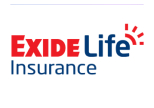How To Calculate Surrender Value Of Endowment Policy?
Surrendering an endowment policy implies when policyholders voluntarily decide to terminate the policy before its maturity.
Policy surrendering is pretty common in India; reports suggest that 50% of life insurance policies in India [1] do not reach maturity as policyholders give up on their policies due to several reasons, such as:
-
The policy coverage, benefits, or flexibility might not meet their expectations.
-
In cases of severe cash crunches when they are unable to pay premiums.
-
The policy maturity date is too far, and funds are required on an immediate basis.
Previously, if the insured surrenders the policy, all their paid premiums become null and void.
But now, insurance companies provide “surrender value” as a benefit to the policyholders, and this is how the surrender value of an endowment policy is calculated.

Basically, surrender value is of two types:
-
Guaranteed Surrender Value (GSV)
-
Special Surrender Value (SSV)
Let’s understand both of these in detail!
1) Guaranteed Surrender Value (GSV)
The GSV is mentioned in the policy brochure itself under the section “Surrender.” It is typically the sum of the total premiums already paid and the Surrender Value of the Guaranteed Additions accrued to the policy, if any.
Example:
If you pay a premium of ₹75,000 in the first three years (₹25,000 yearly for a sum assured of ₹5,00,000), the minimum you'll earn is 30% of ₹50,000 (total premium paid minus first-year premium), or ₹15,000.
2) Special Surrender Value (SSV):
Special Surrender Value is determined by the insurance company subject to prior approval of IRDAI. It is calculated according to the below formal.
Special surrender value = {Basic Sum Assured X (Number of Premiums Paid/Total Number of Premiums Payable) plus total bonus received}X Surrender Value Factor.
Example:
Let's say you pay ₹25,000 in premiums on a quarterly basis for a 20-year policy with a sum assured of ₹5 lakh. Assuming you stop paying premiums after 3 years; in total you have paid 12 premiums (1 year = 4 || 4*3)
The paid-up value will be ₹5,00,000*(12/80)= ₹75,000
Here,
80 (20X4)= Number of premiums you were supposed to pay
12 (3X4)= Number of premiums you have actually paid.
The special surrender value (SSV) is calculated when the surrender value factor multiplier is multiplied by the total paid-up value (paid-up value + bonus).
Why is Surrender Value Important?
The surrender value holds utmost importance for several reasons.
-
If you find yourself in need of cash, the surrender value offers a quick way to access funds before the policy maturity. The amount can be used to pay off expenses and debts or invest in something else.
-
Essentially, it offers flexibility and an exit option if the policy no longer suits your needs.
Factors Affecting the Surrender Value
Below are some of the factors that affect the “Surrender Value” of an endowment policy.
-
Policy In-force: The major factor that affects surrender value is how long the policy has been in force. The longer the policy has been active, the higher the surrender value will be.
-
Fees and Charges: The surrender value can be increased or decreased according to the policy fees and charges.
-
Premium Payment Terms: The surrender value of an endowment policy is affected by the Premium payment term as well. More payments usually mean a higher value upon surrender.
-
Market Conditions: If the policy is linked to market investments, the surrender value may be impacted by current market conditions.
-
Policyholder's Age: The insured’s age may also impact the surrender value.
- Policy Terms & Conditions: Specific policy terms and conditions have a major impact. For instance, not every endowment policy offers Special Surrender Value (SSV); it completely depends on the respective plan.
How To Calculate Surrender Value For Endowment Policy?
Below are methods on how to calculate surrender value for endowment policy:
1. Guaranteed Surrender Value
If you have paid premiums for at least three years, you are eligible for this. It is equal to 30% of the basic premiums paid, minus the first-year premium. Riders with additional premiums, such as accidental death benefits, are not included.
If you pay Rs 75,000 in the first three years (Rs 25,000 yearly for a sum assured of Rs 5,00,000), the minimum you'll earn is 30% of Rs 50,000 (total premium paid minus first-year premium), or Rs 15,000.
This does not include any insurance bonuses you may have received. If your insurance pays a bonus that you earn for the policy's term, the special surrender value is the amount you'll get when you close it early (surrender).
2. Special Or Cash Surrender Value
Before we can appreciate the special surrender value, we must first comprehend the paid-up value. If you don't pay your premiums for a certain length of time, your insurance will continue, but with a smaller sum assured. The term "paid-up value" or "paid-up sum assured" refers to the decreased sum insured.
The original sum assured is multiplied by the ratio of the number of premiums paid to the number of premiums payable to arrive at the paid-up value.
Let's Understand this with An Example
Consider the following scenario: You pay a Rs 25,000 yearly premium quarterly, and the sum assured is Rs 5 lakh for a 20-year policy term. The paid-up value will be Rs 5,00,000X(12/80) if you cease paying after three years, i.e. after you have paid 12 premiums.
We had estimated the paid-up amount to be Rs 75,000. The exceptional surrender value = 27.76 per cent (Rs 75,000+Rs 60,000) = Rs 34,476 in the third year, anticipating a bonus of Rs 60,000 and a surrender value factor of 27.76 per cent.
In this scenario, the amount of premiums you were expected to pay is 80 (20X4), however, the number of premiums you paid is 12 (3X4).
Rs 75,000 is the paid-up value. This is the amount you will receive when you reach retirement age or when you pass away. The total paid-up value is the sum of the paid-up value plus the bonus.
The amount you will receive if you cancel the insurance is known as the special surrender value. The surrender value factor multiplier is multiplied by the total paid-up value (paid-up value + bonus).
The surrender value factor is a proportion of the total value of the contract plus the bonus. For the first three years, it is zero, but it begins to rise in the third year.
Conclusion
By following the above methods, you can calculate the surrender value of your policy easily. All you need to do is figure out:
-
How long you’ve had the policy,
-
How much premiums you’ve paid in,
-
Any bonuses you’ve earned and
-
Any fees for ending it early.
For the ones who find it difficult to calculate the surrender value of the endowment policy, get in touch with our relationship manager at +91-7551196989.
Frequently Asked Questions (FAQs)
Q. What is the surrender value of an endowment policy?
The surrender value is the amount of money you receive if you choose to terminate your endowment policy before its maturity date.
Q. Do all endowment policies offer a surrender value?
It totally depends on the chosen endowment policy. While many plans do include this benefit, some may not. To check this, read the policy brochure carefully and look for the “Surrender Benefit” or related section.
Q. What are the consequences of policy surrendering?
Surrendering a policy can have several consequences, such as
-
Reduced amount of money compared to the policy’s full value,
-
Surrender charges and
-
Loss of future benefits the policy would have provided
Q. What is the right time to surrender the policy?
There is no right or wrong time to surrender the policy. It completely depends on your financial circumstances and the company policies. For instance, policy surrender is typically allowed after 2 to 3 years of premium payment, so it will not be possible for you to surrender the plan before this timeframe. Only buy a policy if you have sufficient funds to pay premiums for at least 3 years.
Q. Do endowment policies offer surrender value?
Yes! Endowment policies typically offer Guaranteed Surrender Value (GSV) and Special Surrender Value (SSV) after a certain number of premiums have been paid.
References:
-
https://www.financialexpress.com/money/insurance-how-much-cash-value-for-life-insurance-the-debate-continues-3473952/
Also Read:
What Is The Eligibility Criteria For Purchasing An Endowment Plan?
How Can Endowment Plans Help In Retirement Planning?
Disclaimer: This article is issued in the general public interest and is meant for general information purposes only. Readers are advised not to rely on the contents of the article as conclusive and should research further or consult an expert in this regard.



























































